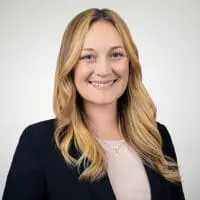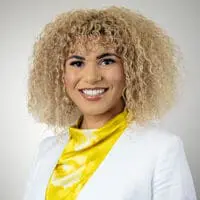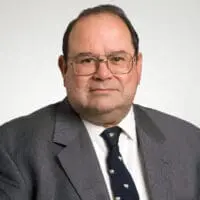Publication
Are Your Academic Institution’s Athletes “Employees” Under NLRA? The NLRB General Counsel Thinks So.
By Gerard Morales, Jada Allender and Ashley McLachlan
On September 29, 2021, National Labor Relations Board (“NLRB”) General Counsel, Jennifer A. Abruzzo, released Memorandum GC 21-08 (the “GC Memo”) issuing guidance on her position that certain “Players at Academic Institutions” are employees under the National Labor Relations Act (“NLRA”). Refusing to use the phrase, “student-athletes” the GC Memo lays out the framework for why she concludes that certain college athletes should be provided statutory protections under the NLRA and her intention to prosecute for NLRA violations. General Counsel Abruzzo’s stance finds growing support for college athlete unionization which has been increasingly recognized by the judicial and legislative branches.
GC Memo’s Position That Players at Certain Academic Institutions Are Employees Under Section 2(3).
Although lacking in precedential value, the GC Memo recalls her predecessor’s 2017 memorandum (“GC 17-01”) which analyzed, in part, the 2015 NLRB decision, Northwestern University, 362 NLRB 150, 1356 (2015). In Northwestern, the board refused to exercise its jurisdiction over a union’s representative petition seeking to represent Northwestern University football players on scholarship. Disagreeing, then-acting General Counsel, Peter Robb, argued that the football players in Northwestern and other players at private universities are employees under the NLRA finding support in the statute’s omissions and common law agency theories. Specifically, he interpreted that the NLRA’s definition of “employee” to be broad and “include any employee, and shall not be limited to the employees of a particular employer, unless the Act . . . explicitly states otherwise” and the act’s language does not exempt “university employees, football players, or students.” See 29 U.S.C. §152(3).
Peter Robb further solidified his argument by turning to common-law agency theories—the football players seeking representation were said to: (1) perform a service (play the sport for the University resulting in profit and valuable University representation and marketing); (2) receive compensation (scholarship, room and board, stipends); and (3) have the terms and conditions of their performance controlled by the University or other institutions like the NCAA (practice and play hours, GPA and other academic requirements, restrictions on gifts and incentives). Resurrecting this argument, General Counsel Abruzzo reasserted this as the governing theory in her recent memorandum and concluded that “nothing in [Northwestern] precludes the finding that scholarship football players at private colleges and universities, or other similar situated Players at Academic Institutions, are employees under the Act.”
Section 7 Protections
As the recent GC Memo presents, General Counsel Abruzzo’s position is that certain Players at Academic Institutions “should be protected by Section 7” and that misclassifying them as “student-athletes” and leading such players to believe that they are not entitled to NLRA protections could constitute “chilling” of Section 7 activity. Indeed, General Counsel Abruzzo does not mince words, expressing her clear intent to “pursue an independent violation of Section 8(a)(1) of the Act where an employer misclassifies Players at Academic Institutions as student-athletes.”
Interestingly, the GC Memo does not leave insight as to what could constitute “concerted activity” in the academic-athletics context. However, the NLRB appears to broadly interpret what constitutes concerted activity. As indicated by a previous memorandum, GC 21-03, so long as there is a direct nexus to employees’ interests as employees, activities that involve political and social justice advocacy could be protected.1
Joint Employer & State Institution Liability
One area left ambiguous in GC 17-01 was who could be held liable, only implying the governing University and the NCAA could be an “employer” where both controlled the terms and conditions of the athlete’s employment. But the recent GC memo appears to clarify this point. In footnote 34, General Counsel Abruzzo states that she will consider pursuing a joint employer theory due to the NCAA’s “strict control” over the players. The footnote goes on to provide a potentially even more expansive view—allowing for instances encompassing even public universities:
[I]t may be appropriate for the Board to assert judication over the NCAA and an athletic conference, and to find joint employer status with certain member institutions, even if some of the member schools are state intuitions. . . .Therefore, I will consider pursuing charges against an athletic conference or association even if some member schools are state institutions.
General Counsel Abruzzo Is Not Alone
As General Counsel Abruzzo has made clear, she “will pursue an independent violation of Section 8(a)(1) of the Act where an employer misclassifies Players at Academic Institutions as student-athletes.” She is not alone. In GC 21-08, General Counsel Abruzzo refused to refer to college athletes as “student-athletes” because “the term was created to deprive those individuals of workplace protections.” Recently, Justice Kavanaugh struck a similar tone in the Supreme Court decision, NCAA v. Alston. Justice Kavanaugh’s concurrence opined that the “NCAA couches its arguments for not paying student-athletes in innocuous labels. But labels cannot disguise the reality: The NCAA’s business model would be flatly illegal in almost any other industry in America.” The NCAA business model to which Justice Kavanaugh is referring to is the amateurism model whereby the NCAA “us[es] unpaid student-athletes to generate billions of dollars in revenue” while intentionally avoiding any classifications of the athletes as “employees.” Justice Kavanaugh went on to acknowledge that there would be many issues with increased compensation for student-athletes, including how much to pay, how the compensation would comply with Title IX, and other related issues. One solution to these issues, as Justice Kavanaugh put it, would be college athletes engaging in collective bargaining “akin to how professional football and basketball players have negotiated for a share of league revenues.”
Beyond the concurrence of one Supreme Court Justice, there is also congressional support for General Counsel Abruzzo’s position. In May of this year, the College Athlete Right to Organize Act was introduced. The College Athlete Right to Organize Act would change the NLRA’s definition of “employee” to include college athletes and give them collective bargaining rights. Legislative changes like this are being accompanied by a swell of pending litigation.2
Additionally, General Counsel Abruzzo’s position is bolstered by the fact that college athletes can now monetize their name, image, and likeness. As General Counsel Abruzzo stated, the “freedom to engage in far-reaching and lucrative business enterprises makes Players at Academic Institutions much more similar to professional athletes who are employed by a team to play a sport.”
Conclusion
Several outstanding questions remain. How will this affect players who do not receive scholarships or other compensation like incentives—will they benefit from similar protections? Will this have a deterring impact on universities' willingness to provide scholarships and incentives in certain programs? Could similar theories apply to private high school athletics?
Between the impending NLRA prosecution by General Counsel Abruzzo, the momentum building in the courts towards college athlete unionization, and the federal legislation brewing, institutions with athletic programs may want to keep an eye on the developing student-athlete unionization efforts.
Footnotes
-
For more on concerted activity please refer to “Inherently Concerted Activities”, Gerard Morales, Apr. 5, 2021 available here.
-
One such case that has made its way into the spotlight is a federal lawsuit that is trying to establish the right to compensation as employees for college athletes.
About Snell & Wilmer
Founded in 1938, Snell & Wilmer is a full-service business law firm with more than 500 attorneys practicing in 17 locations throughout the United States and in Mexico, including Los Angeles, Orange County, Palo Alto and San Diego, California; Phoenix and Tucson, Arizona; Denver, Colorado; Washington, D.C.; Boise, Idaho; Las Vegas and Reno, Nevada; Albuquerque, New Mexico; Portland, Oregon; Dallas, Texas; Salt Lake City, Utah; Seattle, Washington; and Los Cabos, Mexico. The firm represents clients ranging from large, publicly traded corporations to small businesses, individuals and entrepreneurs. For more information, visit swlaw.com.



